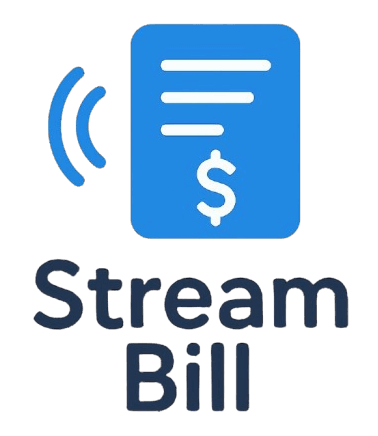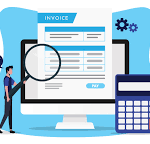What is Meter Reading?
Meter reading refers to the process of recording the consumption of utilities such as electricity, water, or gas as shown on a physical or digital meter. Utility companies use this data to bill customers accurately for the resources they’ve used.
Why Meter Reading is Important
Accurate meter readings play a crucial role in:
- Ensuring fair billing
- Detecting leaks or anomalies
- Monitoring consumption patterns
- Supporting energy conservation efforts
- Preventing billing disputes
Without proper meter readings, users may either be overcharged or undercharged, leading to confusion, complaints, or resource wastage.
Types of Utility Meters
Utility meters vary depending on the service being measured and the technology used. Here’s a breakdown:
1. Electricity Meters
These measure the amount of electrical energy consumed in kilowatt-hours (kWh). Common types include:
- Analog Meters: Older versions with a rotating disk and dials.
- Digital Meters: Display readings electronically.
- Smart Meters: Communicate usage data directly to utility providers.
2. Water Meters
Used to measure the volume of water usage in cubic meters (m³) or gallons. Types include:
- Positive Displacement Meters
- Turbine Meters
- Ultrasonic Meters
3. Gas Meters
These track gas consumption in cubic feet or cubic meters. Main types include:
- Diaphragm Meters
- Rotary Meters
- Thermal Mass Flow Meters
Manual vs. Smart Meter Reading
Manual Meter Reading
Traditionally, utility personnel visit premises to physically read the meter and record the data.
Pros:
- Low initial cost
- Simple implementation
Cons:
- Time-consuming
- Prone to human error
- Delayed billing updates
Smart Meter Reading
Smart meters send data automatically to utility companies via wireless networks.
Pros:
- Real-time monitoring
- Higher accuracy
- Remote access
- Better usage insights
Cons:
- Higher installation cost
- Privacy concerns (data security)
How to Read Different Meters
Reading an Analog Electricity Meter
- Note the position of each dial from left to right.
- If the pointer is between two numbers, take the lower one.
- Ignore the last dial (often red or marked as decimal).
Reading a Digital Electricity Meter
Simply read and record the number shown on the screen, typically in kWh.
Reading a Water Meter
Most meters show total usage with a series of numbers—read all black numbers (whole units) from left to right.
Reading a Gas Meter
Similar to water meters. Read the black or white digits only, left to right, and ignore any red numbers.
How Often Should Meters Be Read?
Utility meters are typically read:
- Monthly: Common in most cities
- Bi-monthly or Quarterly: In some rural or less monitored areas
- Real-time (Smart Meters): Updates every few minutes or hours
Meter Reading and Utility Billing
Meter reading directly affects your utility bill. Here’s how:
- Initial Reading: Taken at the start of the billing period.
- Final Reading: Taken at the end of the billing cycle.
- Usage Calculation: Final – Initial reading = Consumption
- Bill Generation: Consumption × Tariff Rate = Final Bill
Common Issues in Meter Reading
1. Misreading the Meter
A common human error that can lead to incorrect billing.
2. Estimated Readings
If the actual reading isn’t possible, utility companies estimate usage based on past trends—often inaccurate.
3. Meter Faults
Meters can malfunction or run slow/fast, affecting accuracy.
4. Tampering
Illegal alteration of meters to reduce consumption readings.
How to Report or Correct Errors in Meter Readings
If you believe your meter reading is incorrect:
- Photograph the current meter reading
- Compare it with the billed value
- Contact your utility provider
- Request an official inspection
- File a dispute if necessary
Benefits of Accurate Meter Reading
For Consumers
- Fair billing
- Energy awareness
- Ability to track trends and reduce usage
- Avoid late fees due to estimated overbilling
For Utility Providers
- Better demand forecasting
- Reduced customer disputes
- Streamlined billing process
- Enhanced service quality
Technological Advancements in Meter Reading
1. Automated Meter Reading (AMR)
Uses short-range communication like radio frequency to send readings to a nearby receiver.
2. Advanced Metering Infrastructure (AMI)
Provides two-way communication, enabling remote configuration, diagnostics, and outage detection.
3. IoT Integration
Smart home systems now integrate with smart meters to give real-time updates on mobile apps or dashboards.
4. Cloud-Based Analytics
Data from smart meters can be analyzed for trends, wastage, and predictive maintenance.
Future of Meter Reading
As technology advances, meter reading is becoming more integrated with:
- AI and machine learning for consumption forecasting
- Blockchain for secure transaction records
- Green energy tracking for net metering
- Voice assistants for real-time updates
The goal is to achieve full automation and transparency for both providers and users.
DIY Meter Reading: Step-by-Step Guide
Want to read your own meter? Here’s how:
Step 1: Locate Your Meter
Meters are often placed outside near the main power/water/gas line or inside utility rooms.
Step 2: Identify the Meter Type
Is it digital, analog, or smart?
Step 3: Read the Display
- For analog: record each dial reading from left to right.
- For digital: read and note the digits on the display.
Step 4: Record the Reading
Maintain a log to track usage trends.
Step 5: Compare with Your Bill
Verify if your reading matches or is close to what’s shown on your monthly statement.
How Smart Meters Improve Energy Efficiency
Smart meters empower consumers with data. Here’s how they help:
- Identify peak usage hours
- Set energy-saving targets
- Monitor appliances’ consumption
- Use time-based tariffs to reduce bills
- Automate energy usage with smart plugs
Meter Reading Apps and Tools
Some popular apps and platforms include:
- Google Nest or Alexa-integrated dashboards
- Utility company portals
- EnergyHub
- Sense Energy Monitor
- SmartThings
These tools provide real-time monitoring, alerts, and energy-saving tips.
Myths and Facts About Meter Reading
Myth 1: Smart Meters Are Invasive
Fact: Smart meters only transmit usage data, not personal information.
Myth 2: You Don’t Need to Check the Meter
Fact: Regular checks prevent overbilling and catch anomalies early.
Myth 3: Manual Reading is More Accurate
Fact: Smart meters reduce human error and offer more precision.
How to Keep Your Meter Safe
- Install in a secure but accessible location
- Protect against extreme weather
- Avoid tampering or unauthorized access
- Report any physical damage or irregularities
Legal and Regulatory Standards
In most countries, utility regulators enforce standards such as:
- Mandatory smart meter rollouts
- Consumer rights for meter inspections
- Data privacy and encryption laws
- Meter calibration and certification
Understanding your rights and responsibilities helps avoid legal complications.
Environmental Impact of Smart Metering
Smart meters contribute to sustainability by:
- Reducing energy waste
- Encouraging off-peak usage
- Integrating renewable sources
- Promoting conscious consumption
Conclusion
Meter reading is more than just a number—it’s a vital tool for efficient utility management, fair billing, and environmental stewardship. With the shift toward smart technology, both consumers and utility providers stand to benefit immensely.
As a consumer, taking the time to understand how your meter works, reading it correctly, and keeping track of your usage can help save money and contribute to a more sustainable future.


